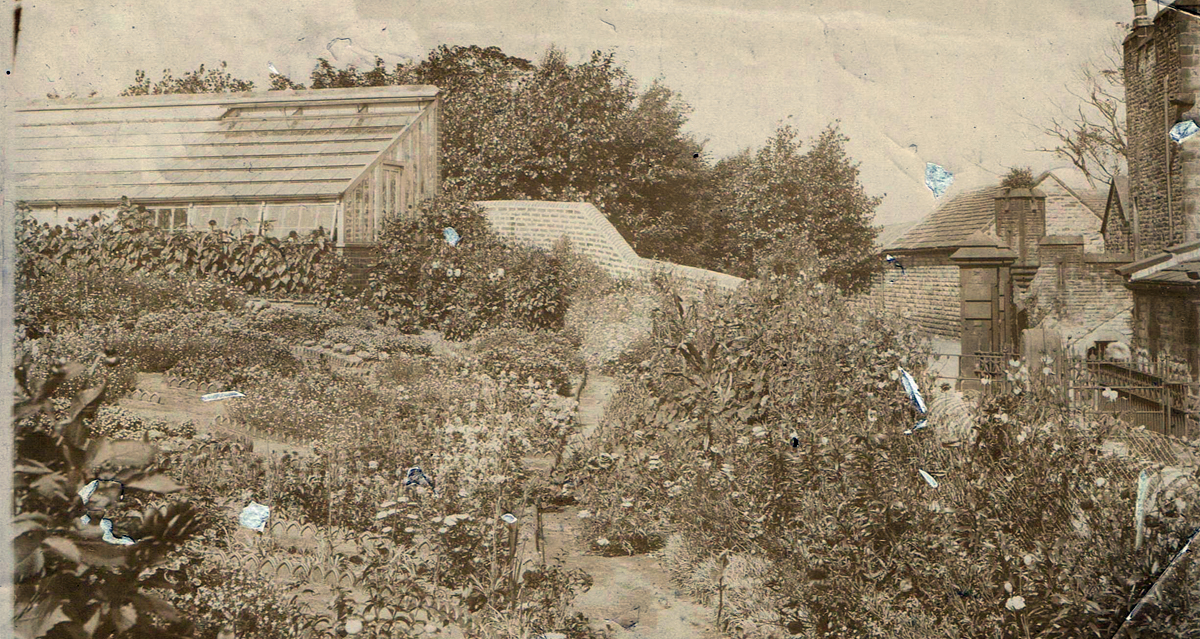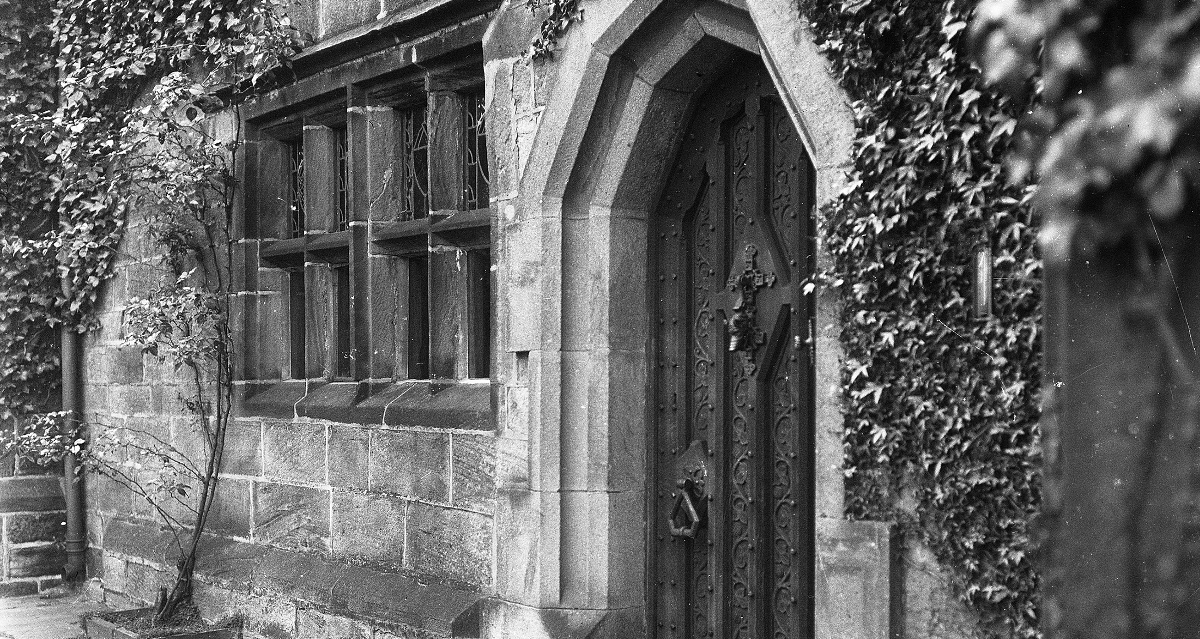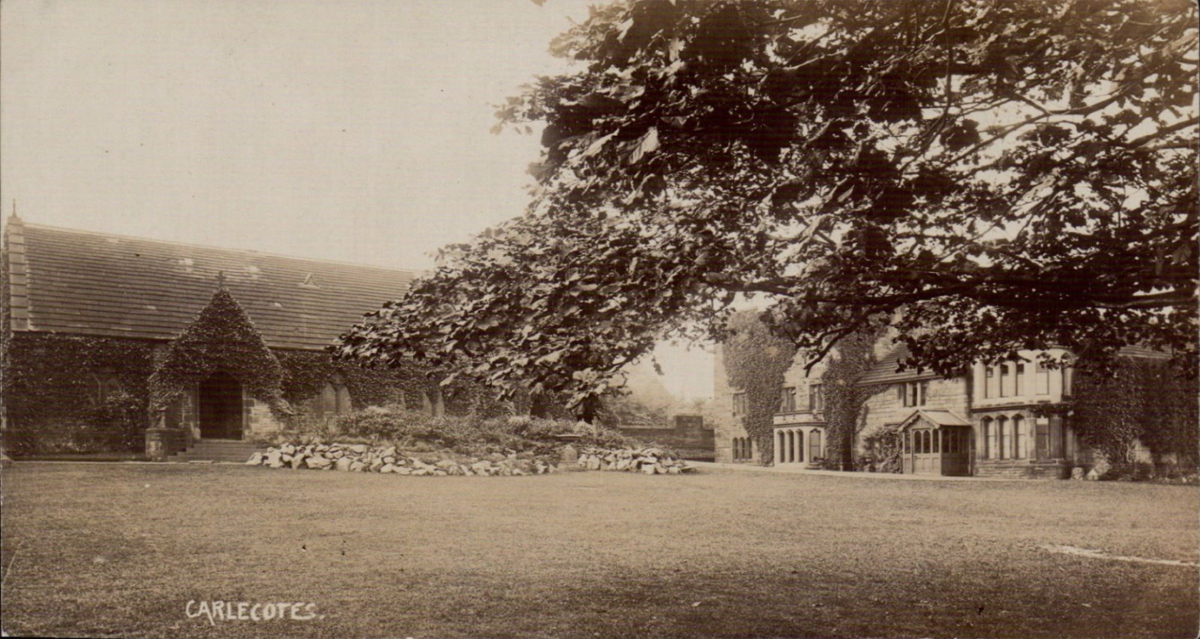The history of Carlecotes Hall
1265
William de Wath, a major local landowner, owns the Manor of Carlecotes. This is confirmed in a writ which stated that Sir Francis Tyas had come with others to Carlecotes on the Friday after the Battle of Evesham (4 Aug 1265) and stolen 60 cows. Tyas admitted the offence and said it was because de Wath had supported Simon de Mountfort against the king. He said others took William’s goods to the value of £100. Soon after these events de Wath died and his son, also called William de Wath, gave away much of his father’s land holdings and it appears he granted Carlecotes [Hall] farm to the Cistercian monastery Rufford Abbey in Nottinghamshire. Carlecotes [Hall] is the likely site of the original manor house.
1270s
The abbot of Rufford given free warren (hunting rights) at Carlecotes.
1300
Elias le Riche holds Abbot Intake confirming he lived at the site of Carlecotes Hall.
1307
John le Riche fined by Wakefield manor for allowing cattle to escape from Carlecotes onto Holme. Much of Carlecotes belonged to the manor of Thurlstone but the Riche family do not appear in Thurlstone court rolls of the 1300s indicating their Carlecotes [Hall] farm was held by a different manor (Manor of Carlecotes referred to in early documents) or that the Riches were tenants of Rufford Abbey living at the old manor house left to Rufford by the de Wath family.
1379
William Riche the mercer of Carlecotes [Hall] pays 12 pence poll tax but again does not appear in Thurlstone manorial records indicating he is living outside Thurlstone manor but still in Carlecotes. He paid three times more tax than anybody else within Thurlstone township.
1486
Several deeds from Crewe Muniments held at Sheffield City Archives refer to purchases at Bullhouse by the Riche family of Carlecotes from 1400 up to 1486.
1486
The last Riches of Carlecotes [Hall] move to Bullhouse.
1540
Rufford Abbey’s farm (Carlecotes Hall) granted to Earl of Shrewsbury by Henry VIII, who confiscated all abbey properties after dissolution in 1537. Earl of Shrewsbury extends Carlecotes Hall and puts relatives of the Haighs’ from Alderman’s Head Farm, Langsett, as tenants. The earl also owned Alderman’s Head and the Haighs refer to their landlords (the earl and his wife) in their 16th century wills. ceiling beams, bressumer and smoke bay in Long Room at Carlecotes Hall are carbon dated to 1515 - 1540 which is confirmed by dendrochronology.
1576
Andrew Haigh and John Haigh of Carlecotes [Hall] referred to in a dispute about the right of way of a road to Carlecotes town fields (The Park). John Haigh has the right to stop the route, which passed Carlecotes [Hall], via Church Lane, indicating he lived there as tenant of Shrewsbury or owner. The 6th Earl of Shrewsbury left a will in which there were several bequests to his tenant farmers of the farms which he owned. Indications are that this is how John Haigh the elder became owner of Carlecotes Hall.
1590s
John Haigh pays tax and is listed in subsidy rolls of the 1590s.
1610/2
John Haigh pays free rent for Carlecotes [Hall] land. Despite the present house being dated to the early 1500s, this is the first time Carlecotes Hall appears in Thurlstone manorial records and is probably due to Shrewsbury’s daughter marrying George Saville and bringing the hall, which was previously not part of Thurlstone manor, as part of her marriage settlement.
1615-21
John Haigh, yeoman of Carlecotes, purchases parts of ex-Rufford land from a long-established local family, the Scotts (Scott Intake) -Three Cornered Piece and Lower Slack below The Park.
1640s
Francis Haigh, referred to in Captain Adam Eyre’s diary, was born and grew up at Carlecotes Hall before moving to The Green (formerly called Greaves House and Oldham House). Francis Haigh was the son of John Haigh the younger.
1660s
William Haigh, eldest son of John Haigh the younger, pays free rent ‘for Carlecotes’ [Hall].
1701/04
William Haigh and his brother Abraham share free rent payments for Carlecotes [Hall] and it is confirmed in manorial records of the 1690s that they had divided the property into two.
1721
In his will Abraham Haigh of Carlecotes [Hall] leaves all his property, including Carlecotes [Hall] to his nephew Abraham Haigh. Before his death, Abraham Haigh the elder builds Savile House for his nephew, which has a date stone bearing the year AH 1706. A date stone at Carlecotes Hall 'SH 1696' refers to Sarah Haigh, wife of Abraham.
1778
Haighs sell Carlecotes Hall to John Turton who was married to Ann Haigh. She was the daughter of William Haigh, whose ancestor was John Haigh the younger, meaning Carlecotes Hall stayed in the Haigh family from 1537 – 1799 (252 years).
1799
John Turton sells Carlecotes Hall to Joseph Johnson.
1848
The heirs of Joseph Johnson sell Carlecotes Hall to John Chapman. An advert for the property and Savile House appeared in the Sheffield Independent that year and referred to Carlecotes Hall as the ‘farm commonly called Carlecotes’ – linking back to the original Carlecotes Manor referred to in 1265.
1857
St Anne's Church was built in the grounds of Carlecotes Hall in 1857 as a Private Chapel by the then owners of the Hall Mr & Mrs John Chapman. It was built on the same footprint as an ancient building that would have carried out religious services - a road in the 1576 road dispute (above) refers to a ‘Kirkgate’ (meaning road to the church) that leads to the present St Anne’s. The fields directly below the church are called Holy Croft, reinforcing the religious connection of the site going back to Rufford Abbey.
1971
Robin and Joyce Morgan-Giles buy Carlecotes Hall from Robert Eyton, descendant of Chapmans.
1982
Duncan and Pat Sharpe buy Carlecotes Hall from Morgan-Giles.
2013
Carlecotes Hall bought by a local family.
Compiled by Michael J. Rochford BA (hons) MA, www.heir-line.co.uk








